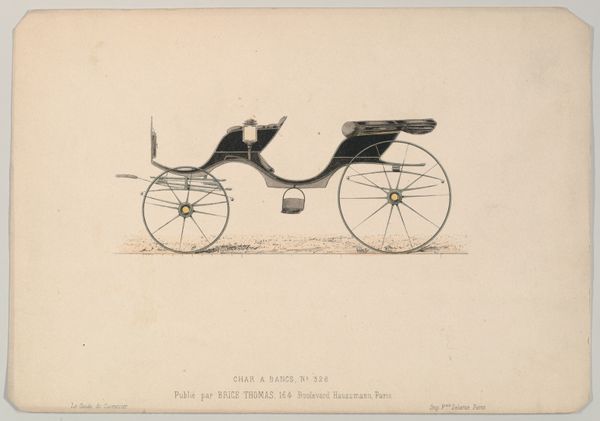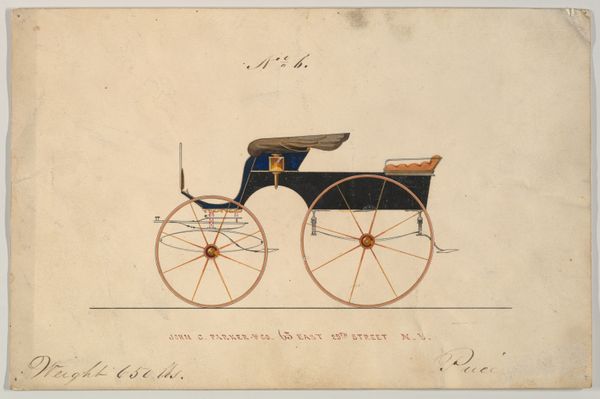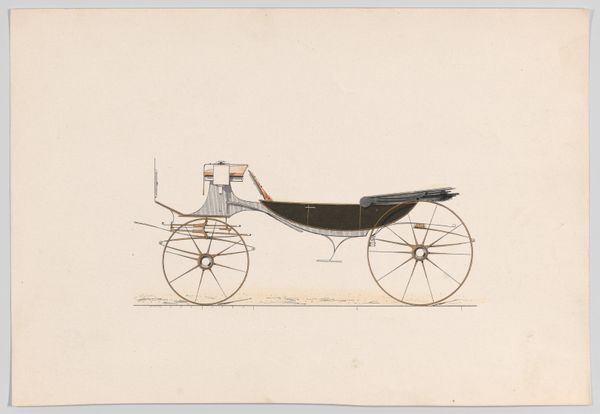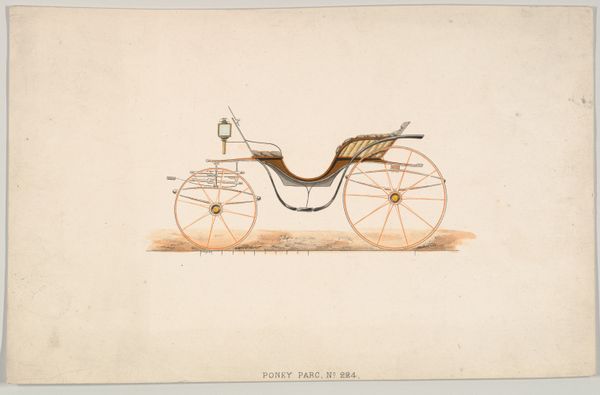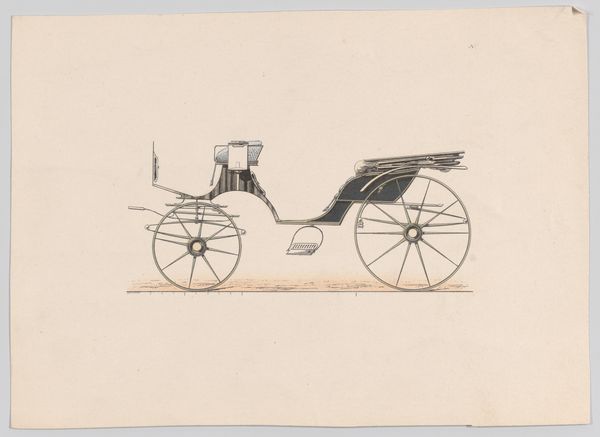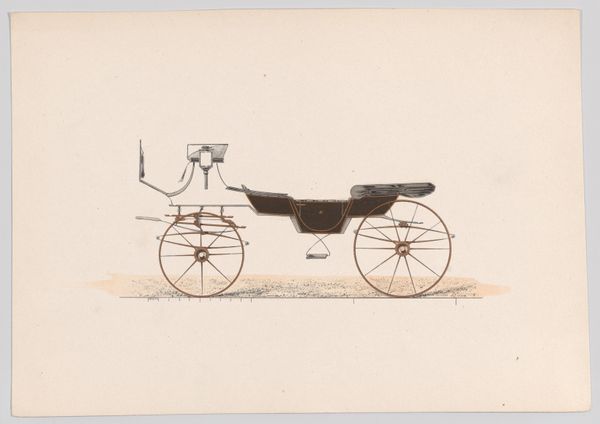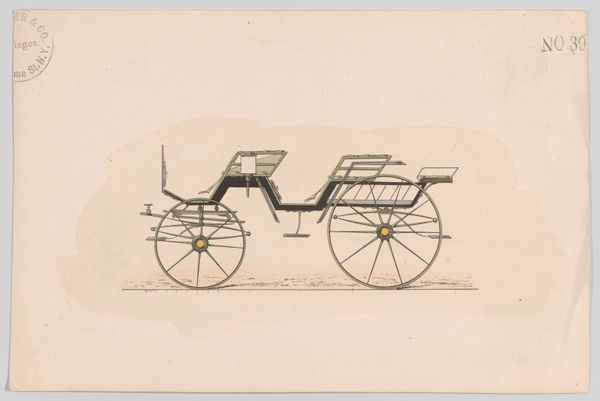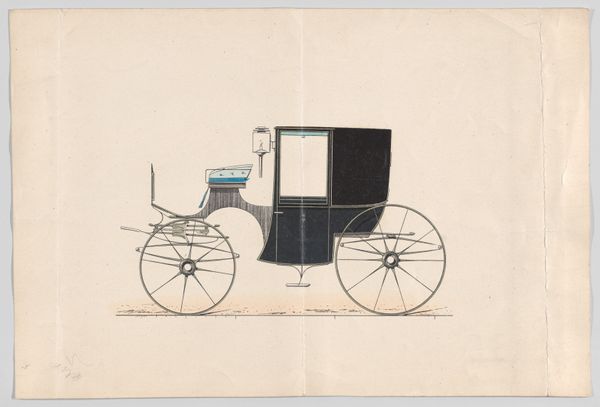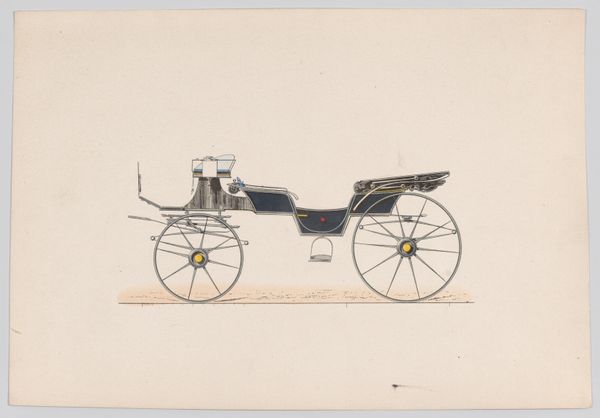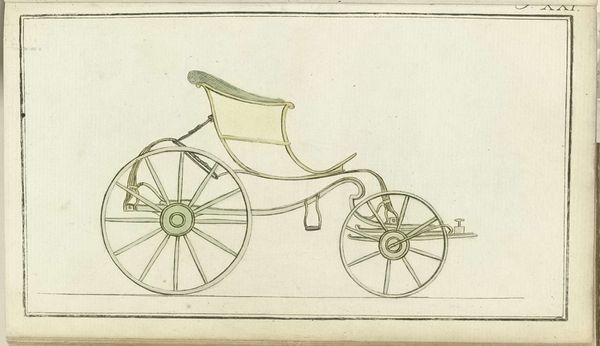
Design for Phaeton, no. 329, from Le Guide du Carrossier 1865 - 1875
drawing, lithograph, print
drawing
lithograph
genre-painting
watercolor
Dimensions: sheet: 6 1/4 x 8 5/8 in. (15.9 x 21.9 cm)
Copyright: Public Domain
Editor: So, this is Brice Thomas’ "Design for Phaeton, no. 329, from Le Guide du Carrossier," dating from about 1865 to 1875. It's a print, a lithograph, with watercolor, of what looks like a stylish carriage. It's so delicate! What catches your eye when you look at this? Curator: What strikes me is the relationship between technological advancement and social display during the Second Empire. Boulevard Haussmann, listed in the print, was itself a symbol of modernization under Napoleon III. This carriage design then becomes not just transport, but a carefully curated performance of status, paraded along these newly designed public spaces. How might its design facilitate or communicate class distinctions? Editor: I hadn't thought of the location as being so important! So, it’s like fashion for the streets? Do you think the artist had specific people in mind when he designed it? Curator: Precisely! These carriage designs were often tailored to appeal to a burgeoning upper-middle class eager to emulate aristocratic styles. Look at the lines, the materials implied, it speaks to wealth and leisure. Do you think this objectifies a gender, in terms of who gets to participate in the cultural experience? Editor: Hmmm... Interesting point. It makes me wonder about who the target audience of the "Guide du Carrossier" actually was. Was it the carriage makers themselves, or wealthy people looking for ideas? Perhaps it reinforced existing gender roles within that society. Curator: It is difficult to say the exact demographic without further information about sales and the production itself. These guides become primary resources into what society valued and purchased as the middle class sought out more luxurious commodities. The value wasn't necessarily the carriage, but what the carriage and technology represented at the time. Editor: That's really broadened my understanding, looking at how an image like this circulated and what it represented culturally. I had a one-dimensional view of this image before, thank you. Curator: It's about seeing the broader historical narrative within a single image. Considering the "who, what, where, when, and why." I appreciate the opportunity to think about the cultural meaning, myself!
Comments
No comments
Be the first to comment and join the conversation on the ultimate creative platform.
